Need advice? Let's talk.
Get straightforward guidance from your broadcasting partner. Schedule a call to chat with the team about your radio station.
Book DemoThe 10 Best Radio Audio Processing Software
Want to boost your audio quality, enhance your sound and stay within legal limits? Then here are the 10 best radio audio processing software to do just that.
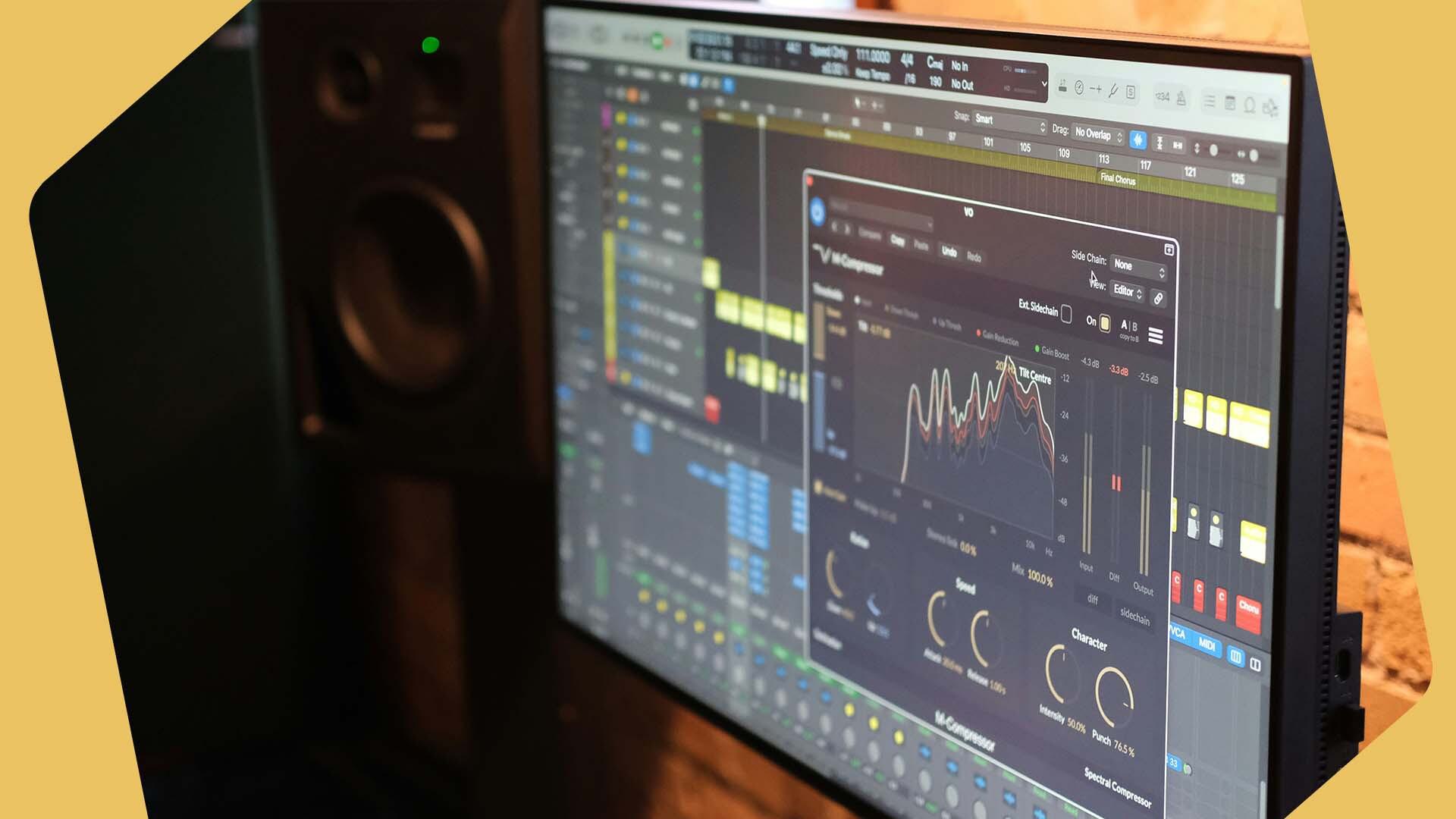
When tuned in to their favourite radio station, listeners want a clear, rich sound without too much static and distracting noise. Radio audio processing software can do the same for your station, keeping your listeners engaged and tuned in. Let’s get into why you should use radio audio processing software and explore the best ones on offer.
What Is Radio Audio Processing Software?
Radio audio processing is the manipulation of audio signals to improve their quality or properties. Terrestrial radio stations use audio processors in front of their transmitters to control peak modulation but online radio stations also benefit from manipulating their audio.

Radio audio processing software refers to programmes that manipulate digital audio signals. These types of programmes can essentially turn your computer into an audio processor.
Why Use Radio Audio Processing Software
Controlling the quality of your broadcasts is important but it doesn’t stop there. Depending on where you’re broadcasting from and to, you may also need to ensure your transmission’s sound is within legal limits.
When you’re aiming to get that rich quality of sound, you want to keep it loud without reaching what’s called over-deviation, which lowers the sound quality. Over-deviation (aka clipping) means part of the audio signal is cut off when it reaches a certain threshold. This is noticeable to the human ear and makes your audio sound not quite right.
Certain radio audio processing software can also add effects, which can make your station sound more professional.
10 Best Radio Audio Processing Software
10. ProppFrexx ONAIR
ProppFrexx ONAIR is a radio broadcasting automation suite that can be operated live or automated in advance. With this radio audio processing software, you get an unlimited mixer that lets you switch between setups and support for nearly every type of sound card. You also get support to create high-quality audio, a segue editor, remote voice tracking, and much more, all in an easy-to-use interface.

While Radiologik only works with macOS, ProppFrexx ONAIR does not run on Mac products unless you use a different program to run Windows on your Mac device. While many other audio processing tools charge a subscription fee, this software only requires a one-time purchase, which may be more accessible to radio beginners.
9. AltaCast
Previously known as Edcast, AltaCast is a free Windows audio encoder that’s used to create online radio streams. AltaCast can be a great option for those looking for audio processing software without all the bells and whistles. If you’re looking for a simple, streamlined solution, AltaCast can help. AltaCast takes your sound card’s audio and broadcasts it to your station with some ability to adjust the settings of your audio, with recording options as well.
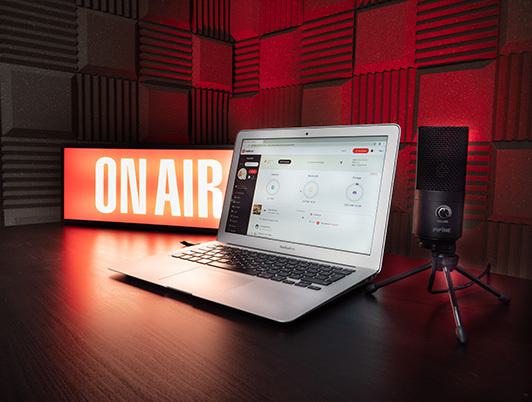
AltaCast is not fairly intuitive and can take some time to learn to use, which may not make it an ideal choice for beginners. However, professionals may also be frustrated with the lack of audio processing features and want something more robust.
8. Radiologik
Radiologik is a radio audio processing software that works for both live DJing and recorded radio automation. Radiologik has two products: Radiologik DJ and Radiologik Scheduler. While Scheduler lets you create playlists with time instructions, artist separation, and more, DJ is where you’ll find more of the audio processing tools.
With DJ, you can edit sound from multiple audio outputs, play jingles and sound effects, utilize professional transitions, and more.
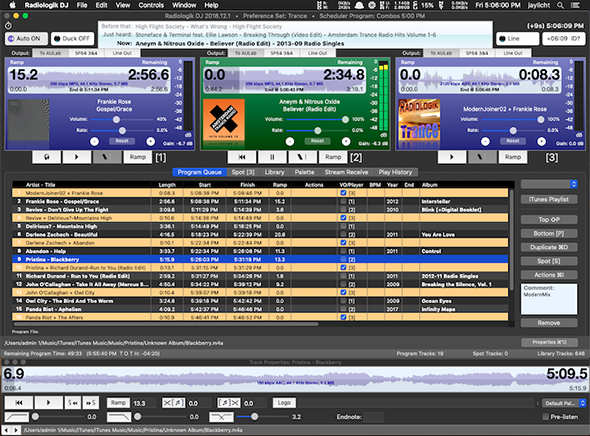
However, Radiologik uses the Music app in Mac products, so this radio audio processing software is only compatible with devices running macOS. It can be set to obey Music Sound Check values and uses an advanced loudness gain tool to ensure you’re getting the right volume and sound. You can edit features like overlap, fade-in, face-out, and much more.
7. Avid Pro Tools
However, if simple isn’t what you’re looking for, you might be a better fit for Avid Pro Tools, a digital audio workstation that does music creation and production and sound recording, editing, and mastering.
Pro Tools does have some free offerings, mainly to assist with making music, but the majority of audio processing tools are included in their premium subscriptions, which can be costly for new radio stations. Audio processing features include the ability to fix timing, beat match audio, manipulate pitch, and customize audio tracks. Premium subscribers also get a collection of music with Sonic Drop, which releases new content into the library every month
6. Audio Hijack
Audio Hijack is an easy-to-use DAW (digital audio workstation) which has a drag and drop block interface. As well as being a great way to route and mix different audio sources together into one stream, it has plenty of audio processing effects at the user’s disposal. Many of these tools seem to be designed for radio, including removing background noise from speech using “Speech Denoise” or the “Time Shift” effect which allows you to pause and rewind live audio - perhaps perfect for eliminating any accidental cursing.
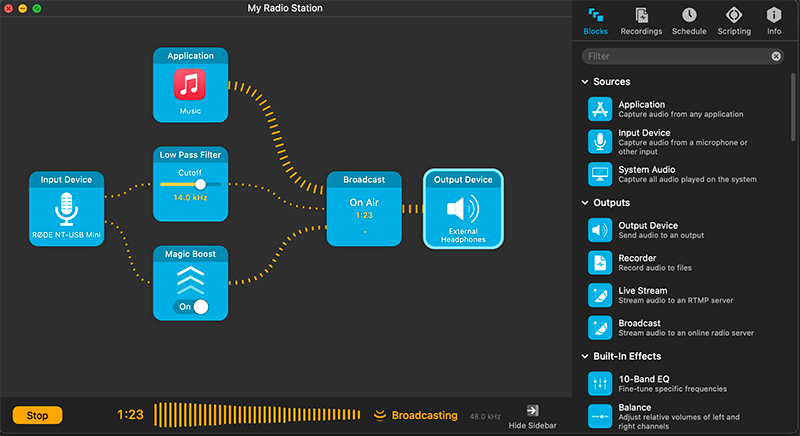
While Audio Hijack isn’t free, it’s at an affordable price point ($64 + local taxes) and is a useful radio audio processing solution for both beginners and intermediates alike. Unfortunately for Windows and Linux users, Audio Hijack only works on macOS.
5. RadioDJ
RadioDJ is a free radio automation software that works with Windows. When you upload tracks to RadioDJ, they can be manipulated, mixed, and made into scheduled playlists. RadioDJ offers an audio processor plugin that creates high-quality sound for your station.
This software also lets you connect and broadcast your online radio station. You can set up automated playlists or play live music directly through RadioDJ.

As free software, RadioDJ can be a great place for new radio station owners to hone their audio processing skills and build their stations. As one of the older forms of radio automation software on the market, RadioDJ has experienced many upgrades over the years, and many beginners to radio say that it’s intuitive, making it ideal software for those just starting their radio station.
4. Audacity
Working with a variety of operating systems, including macOS, Windows, Linux, and more, Audacity is a free and open-source digital audio editor and recording application software that’s a perfect option for beginners. This highly adaptable software works with all major audio formats and supports integration with a variety of third-party plugins.

With Audacity’s Spectogram view and Vamp analyzers, you can visualize your frequencies and make adjustments to create the best sound for your station. You can record live with a microphone or digitize imported recordings, then edit with a litany of cutting, pasting, and mixing tools. Utilize noise reduction features, alter frequencies, adjust tempo, and add more effects that boost your listener’s enjoyment and engagement.
When you download Audacity, you also get access to the free extras in the Muse Hub, including free looping sound clips, sampled instrumental music, and additional effects plugins.
3. Stereo Tool
Owned by Thimeo Audio Technology, Stereo Tool is an audio processor that’s used by small local stations and national networks alike. Whether you’re looking for live processing or file-based processing, Stereo Tool has you covered.
Stereo Tool strives to be adaptable, allowing radio stations to use it to solve common problems like clipping distortion and background noise and create better reception while in the middle of streaming.
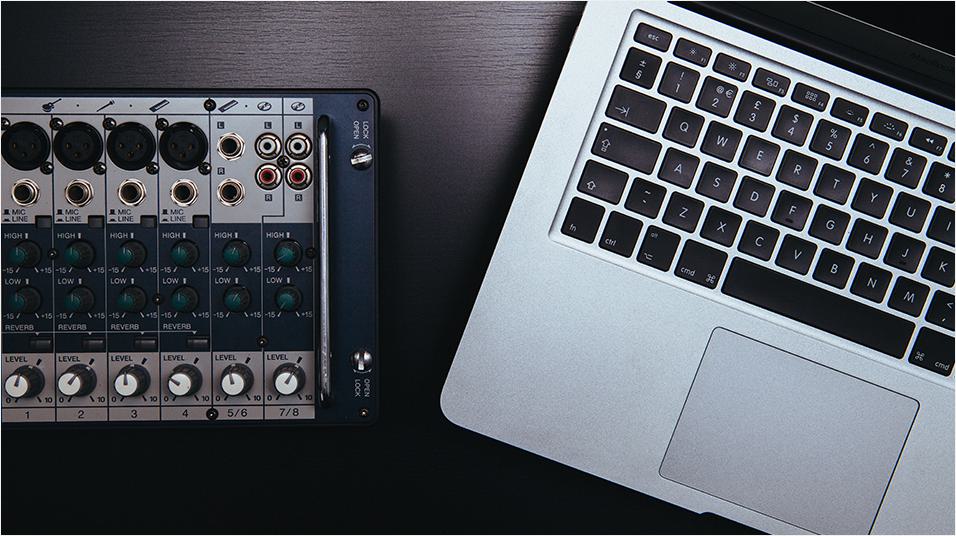
Stereo Tool offers three licenses: Basic, FM Standard, and FM Professional. While Basic is fine for those not looking for FM processing, those looking for FM audio processing assistance will need to upgrade to FM Standard or FM Professional, depending on which features they need, which can raise the price significantly and be costly for new radio stations. That said, licenses are for life and include future software updates.
2. Adobe Audition
Adobe Audition is one of the best digital editing software on the market and can come in handy for your audio processing needs. With an extensive suite of effects, it’s easy to create professional-sounding radio stations with Adobe Audition. This software makes it easy to see your wave as well as remix, repair, and restore your audio.

Adobe Audition is known for being easy to learn and customizable, which ensures that you’re using it the way you need it most. Newcomers to radio may find it worthwhile to subscribe to Audition alone, but Adobe also offers the Creative Cloud, which gives you access to other Adobe tools, like video editing suite Adobe Premiere Pro and motion graphics tool After Effects.
1. BUTT
Broadcast Using This Tool, or BUTT, is a multi-operating system client broadcaster that’s available for Windows, macOS, and Linux.
Once you’ve downloaded BUTT, you can track how you sound with your audio levels and see a log that gives you an overview of your connection. You can connect all your radio stations, with an easy integration to Radio.co that allows you to manage the audio of all your stations all in one place.
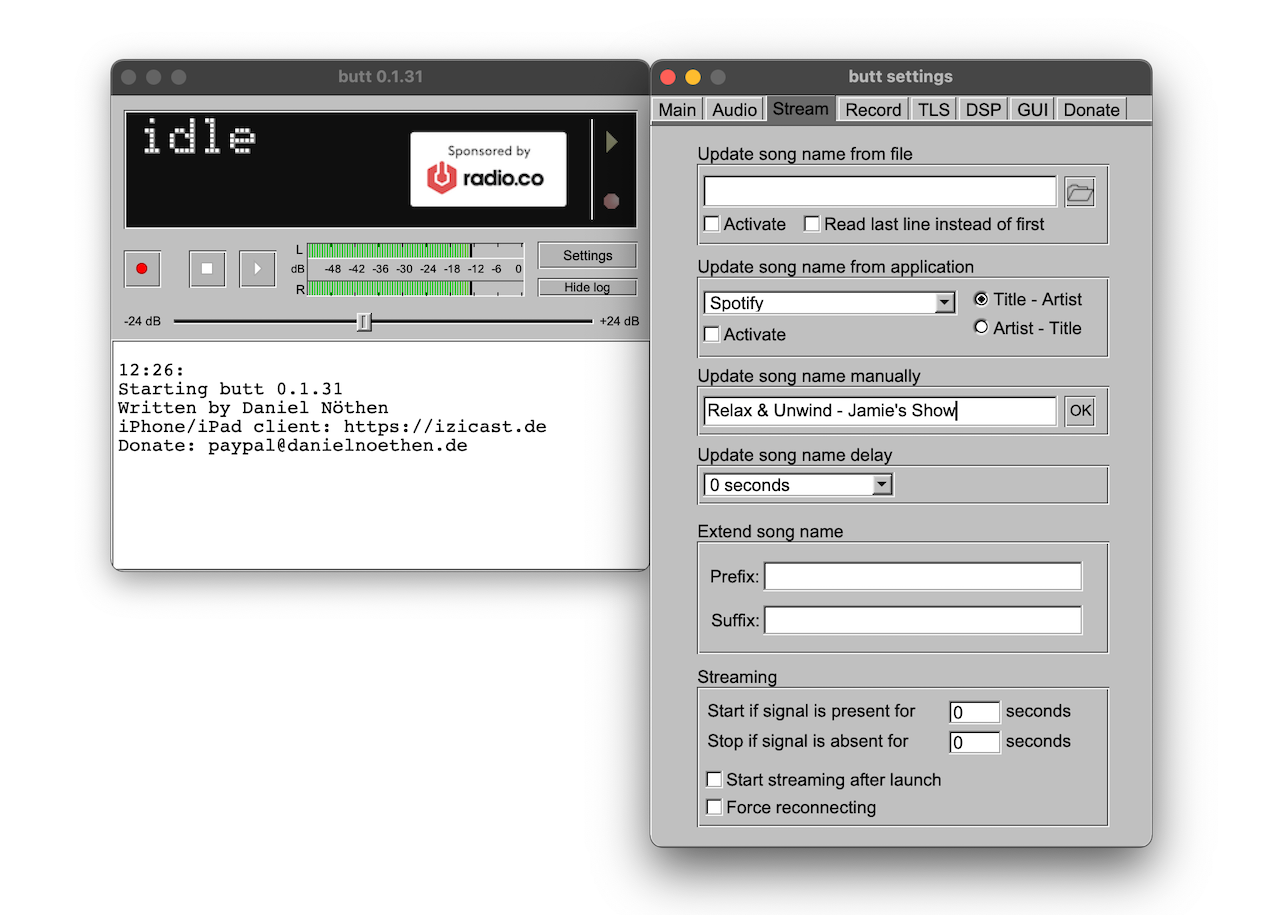
In BUTT, you can adjust how you sound through the Dynamic Range Compressor and the Equalizer features. You can also select where your audio comes from, as you can connect different audio devices. This audio processing software only works with a live feed for external devices like microphones or mixers, but you can route audio to BUTT from other software using a virtual audio cable.
You can also update things like song names manually through BUTT, which will update automatically in your Radio.co accounts if you’re integrated with Radio.co. Better yet, BUTT is free to download and use, meaning you can give it a try risk-free.
Wrapping Up…
Radio audio processing is how you show your audience that you’re a professional. It’s not enough to simply stream your online radio station. You need to optimize your sound to make it a pleasure to listen to, not a pain. With audio processing keeping your loudness in check, your sound quality high, and your effects engaging, you’ll build an audience filled with loyal listeners.
Looking for more ways to make your radio station’s sound engaging? Check out these best radio imaging services.



